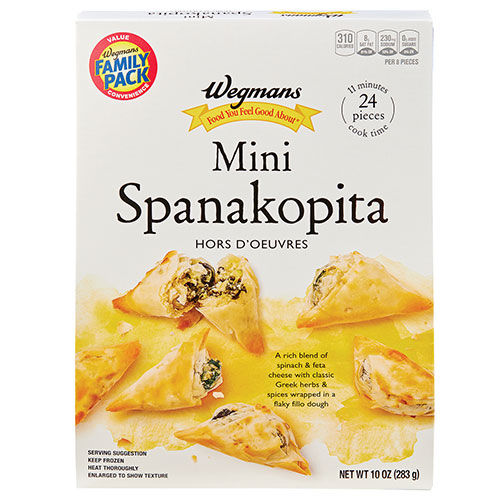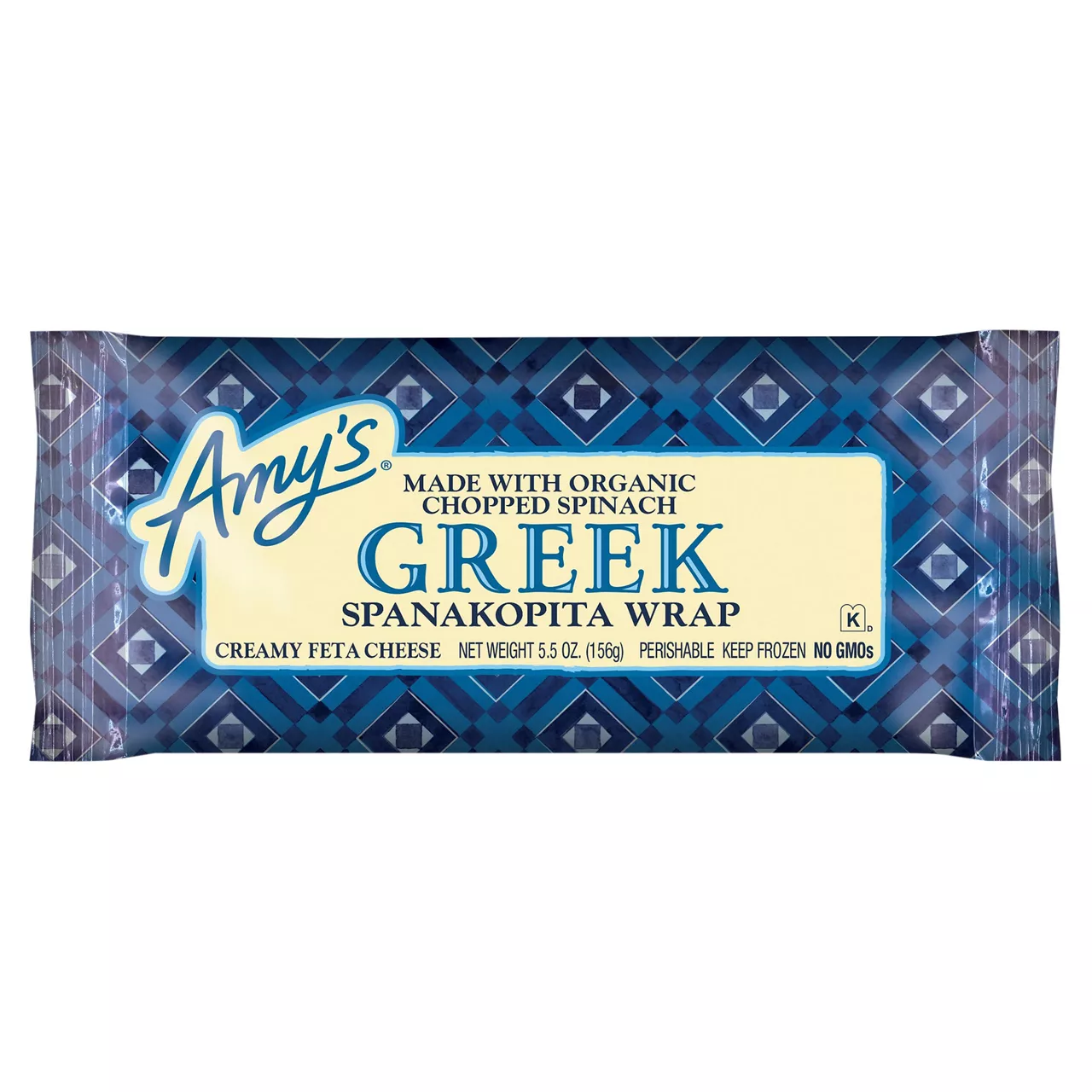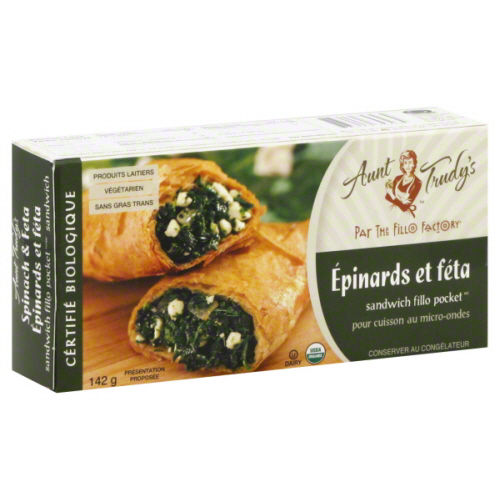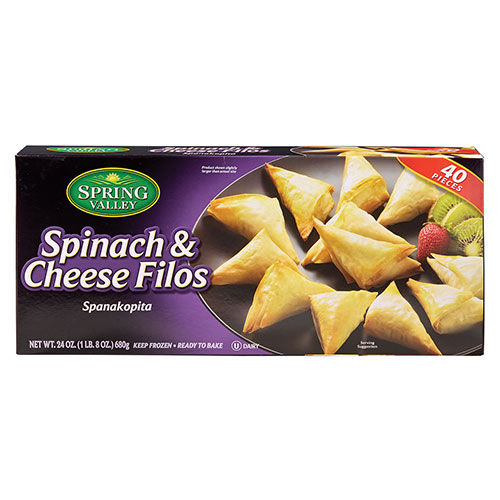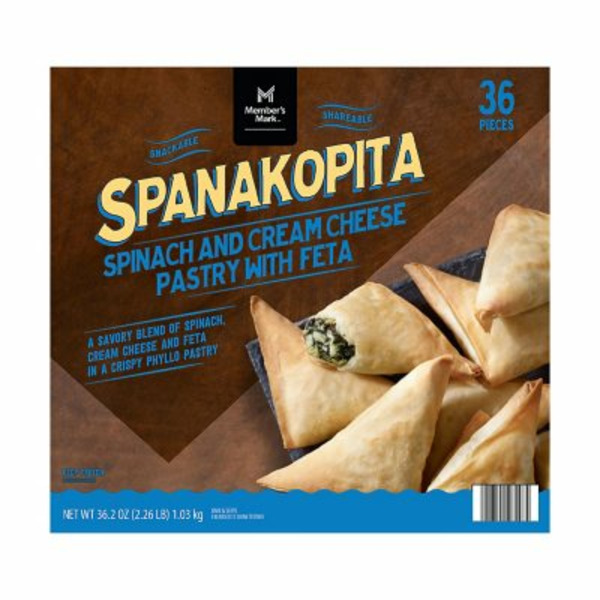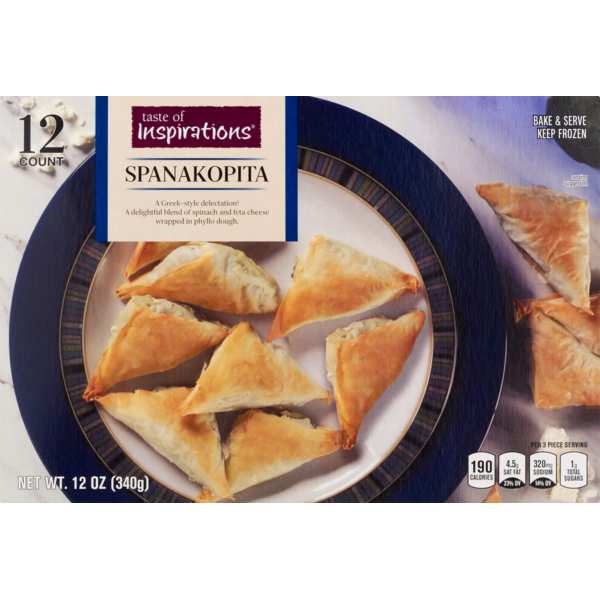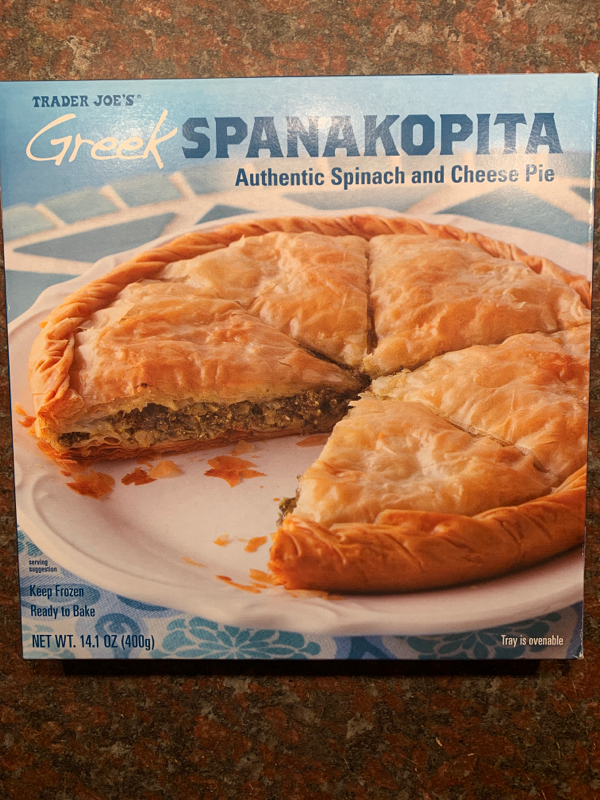Spanakopita
Spanakopita, also known as Greek spinach pie, is a savory delicacy of Greek cuisine. It combines the hearty earthiness of spinach and the rich creaminess of feta cheese, carefully folded and encased in multiple layers of flaky and buttery phyllo dough.
This pastry makes a versatile and flavorful option for a meal or snack, ideal for both family occasions or casual gatherings for its portability and ease of serving. It's often enjoyed as part of meze, a Greek version of tapas. Baking it at home involves a bit of technique, but the result is absolutely worth it.
41%
CARBS
41%
FAT
19%
PROTEIN
83 Spanakopita Products
Wegmans Frozen Mini Spanakopita, 24 Count, FAMILY PACK
Amy's Frozen Meals, Greek Spanakopita Wrap, Made With Organic Spinach, Feta and Ricotta Cheese, Microwave Meals
Aunt Trudy's Organic Spinach & Feta
Spring Valley Vineyard Spinach & Cheese Filos Spanakopita
Kroger® Spanakopita
Member's Mark Spinach & Cream Cheese Pastry With Feta & Spanakopita
Frozen Spanakopita
Cuisine Adventures Spanakopita Spinach & Feta Phyllo Triangles
Taste of Inspirations Spanakopita
Greek Spanakopita
2 Recipes for Spanakopita
Spanakopita FAQ
Spanakopita, although being a palate-pleasing dish, does pose certain challenges to the home cook. The use of phyllo dough, a delicate and thin pastry, requires careful handling and storage. Overlapping of sheets and liberal smearing of butter or olive oil between them is the key to achieving the desired flaky texture. Often, over-stuffing or under-cooking can be a problem, leading to a soggy, rather than crispy crust. Great spanakopita requires a well-balanced filling, the ingredients for which should neither be too dry nor too wet.
To get the most out of this dish, use fresh spinach for your filling, the flavor difference from frozen spinach is noticeable. To prevent the base from getting soggy, make sure to squeeze out as much moisture as possible from the cooked spinach and feta mix. Each layer of phyllo should be lightly brushed with olive oil or butter; this creates a flaky, golden crust as it cooks.
Little known tips and tricks:
1. Some people add a bit of dill or mint to their filling mix for extra flavor.
2. Lay the unused phyllo sheets under a slightly damp cloth to prevent them from drying out.
3. Serve with a tangy tzatziki sauce for a flavorful contrast.
4. A touch of nutmeg can add an unexpected depth to your filling.
My phyllo dough keeps breaking or tearing, what am I doing wrong?
Why is my spanakopita not crispy or flaky?
Can I use other types of cheese besides feta?
Can I use frozen spinach instead of fresh spinach for the recipe?
Why is my spanakopita soggy at the bottom?
Can I prepare spanakopita in advance?
What can I serve with spanakopita?
Why does my filling keep leaking out?
How can I add more flavor to the filling?
How can I ensure equal and consistent pieces?
Health Info
Macros
14g
CARBS
14g
FAT
6g
PROTEIN
Allowed on these diets
LOW FAT
HIGH CALCIUM
VEGETARIAN
MEDITERRANEAN
Contains these allergens
MILK
WHEAT

